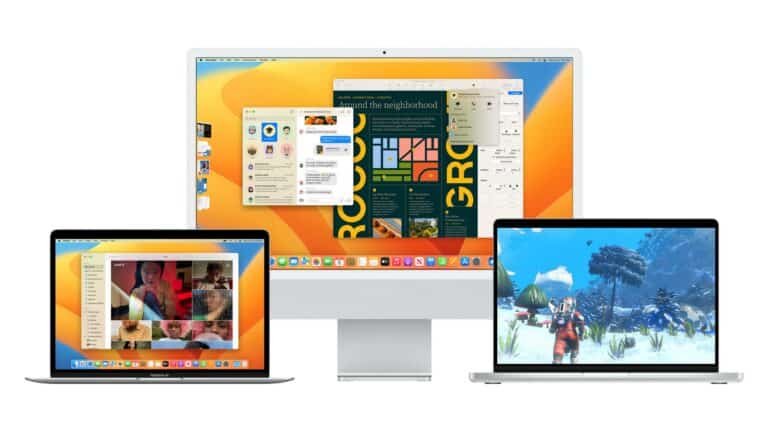Apple released the public beta of its latest operating system version, macOS Ventura.
Apple announced the OS in June. Brian Heater, Hardware Editor at TechCrunch, took the new OS for a spin and reported his findings in an article on Monday. Heater was most impressed with Continuity Camera, a brand-new feature that allows iPhones to double as macOS webcams.
Continuity Camera
“Continuity Camera was the headline feature back at Apple’s Worldwide Developer Conference — both in terms of functionality and just general novelty”, he writes. “It builds upon an earlier feature of the same name, bringing something far more useful for most of us, day-to-day. Download Ventura on your macOS and iOS 16 on a compatible device, and your iPhone will double as a webcam.”
Testing it out, Heater was surprised at how well it worked. “I tried it out on FaceTime, Zoom and Google Hangouts, and they all were able to use the iPhone”, he adds. He notes that the iPhone picture is of much higher quality than the built-in camera. “Obviously, the ideal here would be improving the built-in cameras, but while the company has made the jump from 780 to 1080p on newer systems, the iPhone still wins out.”
Sticking an iPhone atop a Mac isn’t the most elegant solution, Heater observes. But it’s a nice option to have in these days of remote work.
Center Stage and Stage Manager
“Center Stage works with the feature to follow you as you move and incorporate others into the frame”, Heater resumes. “Desk View is an interesting — if not particularly useful addition — that can shoot your hands via overhead view. More useful is the addition of handoff for FaceTime that makes it possible to quickly switch between devices while on a call.”
Stage Manager is Heater’s second-most utilized feature since downloading Ventura. The feature provides an alternative to macOS’s traditional taskbar. Stage Manager opens with a single key prompt and displays all active apps and tabs. The selection an app or tab expands the view.
“I’m always skeptical of any new workflow feature”, Heater explains. “I tend to find these things interesting in my initial review, but they never really stick.” He is nevertheless optimistic about the app. “This is partially due to the feature being on by default. It utilizes macOS’s real estate to create a kind of sidebar where the rest of your open apps sit.”
